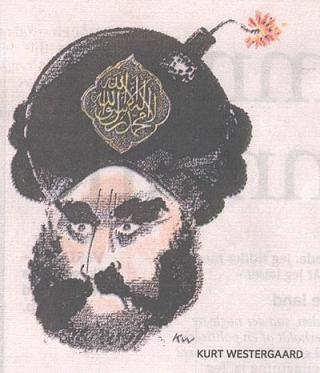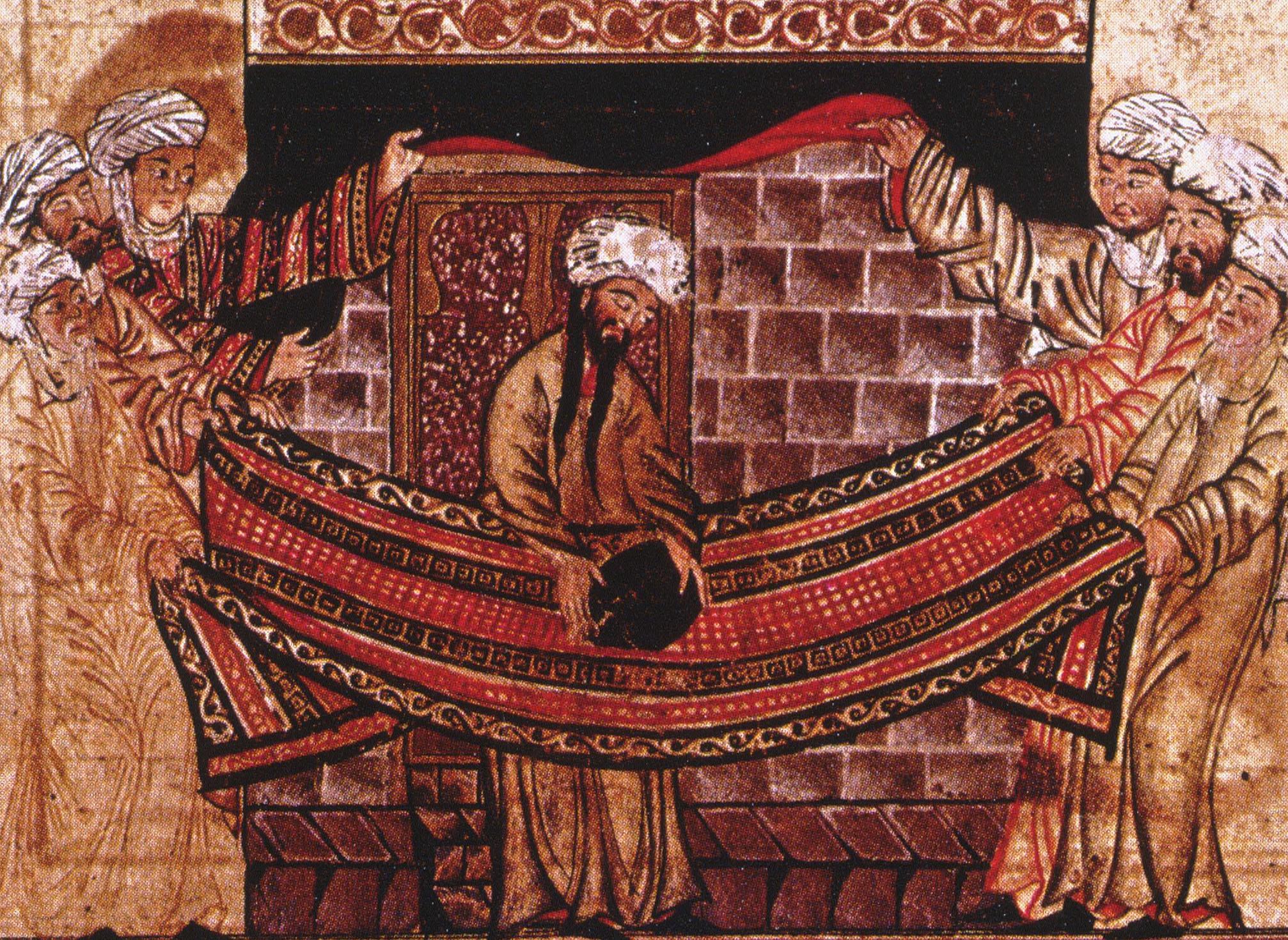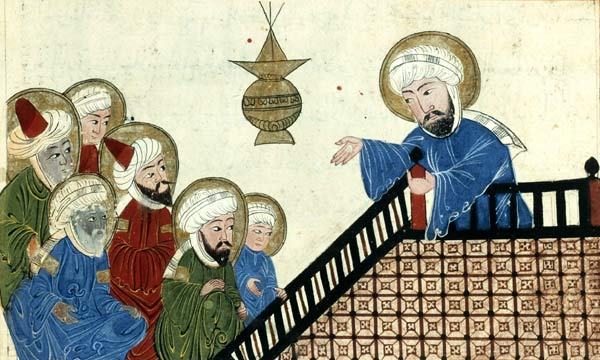Are they gone? Good.
I'm going to draw Mohammed today, because today is officially "Everyone Draw Mohammed Day", it's on facebook, it must be real. This post is going to be me explaining why I think it's not immoral for me to do this, and also why I think it is good that I'm doing this.
First reason, banning. People are trying, by force, to stop other people communicating ideas. Take away all context and that's the situation we are in today. When Theo van Gogh was shot 8 times for making a film critical of women's rights under Islam that was an attempt to silence opinions that his murderer did not agree with. This can never be acceptable. There is no opinion so vile, so evil, so hate filled, that it could ever amount to an evil equivalent to murder. The general argument against censorship is laid out in On Liberty far more clearly than I could ever do here. In shot, consider two cases, either the opinion we censor is wrong, in which case we deprive ourselves of the ability to strengthen our own views by providing counterarguments or it is right, in which case we have deprived ourselves of the truth, which must harm ourselves. I have always argued that the only possible moral response to violent censorship is resistance. If those who want to use violence to censor cannot be convinced they are making a moral error, they must at least be convinced that their aim is impractical, and the internet is wonderful for this. Thanks to the Streisand effect anything that someone tries to censor can (with a little help from obsessives like me) spread far faster than it would have had the censorship not taken place.
 The image of Mohammed that sparked off the Danish Cartoon Controversy of 2005, before the controversy, not many read and fewer cared about this cartoon, now it's the first image result on google.
The image of Mohammed that sparked off the Danish Cartoon Controversy of 2005, before the controversy, not many read and fewer cared about this cartoon, now it's the first image result on google.Second reason, sacred. Muhammed is different from the Chinese government censoring the BBC or celebrities censoring something critical of them. Muhammed is sacred. And I think the concept of sacredness is one of the most profoundly dangerous concepts the human mind is capable of expressing. The idea is that Muhammed is somehow beyond considerations of right and wrong, that attacking, or even appearing to attack, him in any way is a grave offence. He has acquired this status because his religion won. Nobody considers banning criticism of the cult of Scientology, because that religion is so small everyone still calls it a cult. Islam is too big for that, that's why legislation has been put before governments all over the world and in front of the UN to prevent any criticism of Islam. Do we think that it is right for questions about what opinions are acceptable to be decided by who has the biggest fan club? If so then I have to ask you if you are aware of the history of early innovators of science and early adopters of religions. If we think it is right that Muhammed should not be criticised because he is sacred then we should agree that the early Christians should have been persecuted for their heresy, that Muhammad should have been persecuted for his, etc etc.
 An early Renaissance fresco depicting Mohammed being tortured in Hell. In 2002, Islamic extremists plotted to blow up the church in order to destroy the image.
An early Renaissance fresco depicting Mohammed being tortured in Hell. In 2002, Islamic extremists plotted to blow up the church in order to destroy the image.Third reason, theology. Muhammad has an interesting place in Islamic theology, rather like the role Mary has in Catholicism. He is not a god and not worshipped, but he regarded with a huge amount of respect and reverence. The reason for this is simple, at least for the Shia. He was without sin. He, and his relatives, were protected from all sin. This forms 3 parts, firstly, he received the Koran from Allah without error, next, he transmitted it without error and finally, he lived without error. Many Muslims quite deliberately seek to emulate Muhammad in their actions because they believe he was without sin. A lot of people criticise Muhammad for marrying Aisha at age 6 and having sex with her aged 9, this is attacked as a lack of understanding of his cultural circumstances. That is precisely the point I would like to make. We all see now that this action was unacceptable (if you dont see that, really, go away and have a think about your morality) the fact that he and those around him didn't see it them indicates that there has been moral progress in humanity from his day to ours. To claim then that Muhammad was moral is either to claim that this moral progress has in fact been a decay, that having sex with 9 year olds is fine, or to suggest that there is no framework for morals at all beyond one's own culture. In either case, I really dont want people in this day and age imitating Muhammad in everything he did. A fine teacher he was, wrote some very nice poetry, but a relevant moral guide for all aspects of modern life? Give me a break. To respect this man as a poet or a leader of men is one thing. To demand respect for him as a paradigm of morality is quite another.
 "The Islamic prophet Muhammad solves a dispute over lifting the black stone into position at al-Kaaba" c.1315
"The Islamic prophet Muhammad solves a dispute over lifting the black stone into position at al-Kaaba" c.1315Fourth reason, history. Muhammad is a character in history, just like Napoleon or Isambard Kingdom Brunel. He was born, lived, walked around, went for a poo, died, and did all the other things that people do. He was a profoundly significant historical figure. Under his influence Arabia was transformed beyond recognition. Without him western civilisation would have taken a profoundly different course. To try and put one of the most significant men in history into a bubble and claim that discussion of him is impossible or somehow off limits is mad. Specifically on illustrations, the idea that one cannot draw Muhammad is a relatively new one (in practice at least). Early images of Muhammad are not uncommon. For example:
 The Prophet Muhammad, 17th century Ottoman copy of an early 14th century (Ilkhanate period) manuscript of Northwestern Iran or northern Iraq (the "Edinburgh codex").
The Prophet Muhammad, 17th century Ottoman copy of an early 14th century (Ilkhanate period) manuscript of Northwestern Iran or northern Iraq (the "Edinburgh codex"). Fifth reason, religious freedom. I believe in religious freedom, I think freedom of religion is one of the most important rights people can demand for themselves. This means every religion must be free to sink or swim according to how well it can argue and persuade others that it is correct. If any one religion (or religion as a concept over irreligion, or vice versa) tries to claim privilege over others then the freedom of conscience and thought of all others has been infringed. When the Racial and Religious Hatred Bill was being debated the strongest voices of opposition were from the religious community. The problem is there is no respectful way to talk to someone of another religion without deliberately being disingenuous. There is no way to express the idea "I believe that your fundamental assumptions about the universe are false" without being disrespectful or insulting. I'm damned sure there's no way to express the idea "the creator of the entire universe is so displeased by your religious beliefs that after you die he will punish you for all eternity" respectfully. If we are going to allow religions to be free, and I believe it is vital that we do, then we must allow that they be criticised, even if doing so is offensive. Some historic drawings of Muhammad are cartoons designed to attack Islam in favour of Christianity, I think it important that the rights of Christians (and others) in this be respected.
 This illustration is taken from La vie de Mahomet, by M. Prideaux, published in 1699. It shows Mohammed holding a sword and a crescent while trampling on a globe, a cross, and the Ten Commandments.
This illustration is taken from La vie de Mahomet, by M. Prideaux, published in 1699. It shows Mohammed holding a sword and a crescent while trampling on a globe, a cross, and the Ten Commandments.Sixth reason, bloodymindedness. I have a fantastically contrary bent, it'll annoy people and this causes me a great deal of pleasure. ... No it's not a very profound argument, but it works for me.




Nice post. I think you make an important point on the danger of sacred images by having them beyond criticism. This seems to be used as a free pass toward violence. I did a post on this subject as well if you're interested. It focuses on the background with South Park and the Danish cartoons, and then the censorship that followed.
ReplyDelete